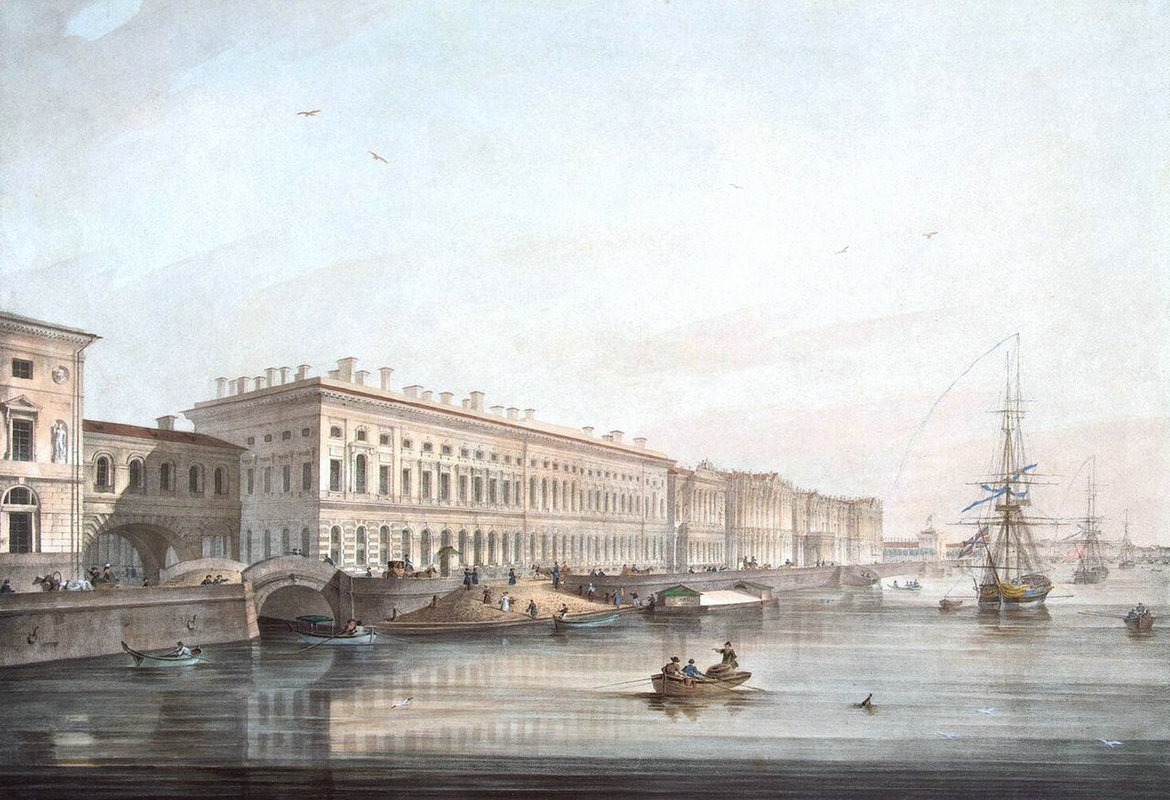State Hermitage Museum, Sankt-Peterburg, Russia


State Hermitage is one of the largest museums in the world. Its exhibitions include over 3 million exhibits representing Antiquity, Western Europe, Middle East, Russia and many more epochs, countries and regions. Its foundation dates back to 1764, when Catherine the Great purchased a big collection of Western European paintings. The museum consists of five buildings located in the historical center of St. Petersburg on the Neva embankment. The Winter Palace was built in 1754-1762 by Francesco Bartolomeo Rastrelli. In 1764-75, at the order of Catherine the Great, Small Hermitage was erected by Jean-Baptiste Vallin de la Mothe and Yuri Felten. In 1771-87, Yuri Felten built the Great Hermitage. In 1783-87, based on Giacomo Quarenghi designs, the Hermitage theatre was built. To complete the ensemble, in 1842-51 Leo von Klenze built the New Hermitage for the emperor museum.
The collections of the museum have been growing for two and a half centuries, and now include 17,000 paintings and 600,000 graphic works, over 12,000 sculptures and 300,000 works of craft, 700,000 archeological and 1,000,000 numismatic findings. In the State Hermitage you can see masterpieces of Leonardo da Vinci, Rafael, Ticiano, Rembrandt, Rubens, Matisse and Picasso. The museum also hosts a world’s best collection of Holland baroque, French paintings of 19th and 20th centuries, Western European decorative art collection, a unique Gold of the Scythes exhibition, and ancient Greek jewellery.
The State Hermitage Museum (Russian: Госуда́рственный Эрмита́ж) is a museum of art and culture in Saint Petersburg, Russia. One of the largest and oldest museums in the world, it was founded in 1754 by Catherine the Great and has been open to the public since 1852. Its collections, of which only a small part is on permanent display, comprise over three million items (the numismatic collection accounts for about one third of them) including the largest collection of paintings in the world. The collections occupy a large complex of six historic buildings along Palace Embankment, including the Winter Palace, a former residence of Russian emperors. Apart from them, the Menshikov Palace, Museum of Porcelain, Storage Facility at Staraya Derevnya and the eastern wing of the General Staff Building are also part of the museum. The museum has several exhibition centers abroad. The Hermitage is a federal state property.
The Western European Art collection includes European paintings, sculpture, and applied art from the 13th to the 20th centuries. It is displayed, in about 120 rooms, on the first and second floor of the four main buildings. Drawings and prints are displayed in temporary exhibitions.
Originally, the only building housing the collection was the ‘Small Hermitage’. Today, the Hermitage Museum encompasses many buildings on the Palace Embankment and its neighbourhoods. Apart from the Small Hermitage, the museum now also includes the ‘Old Hermitage’ (also called ‘Large Hermitage’), the ‘New Hermitage’, the ‘Hermitage Theatre’, and the ‘Winter Palace’, the former main residence of the Russian tsars. In recent years, the Hermitage has expanded to the General Staff Building on the Palace Square facing the Winter Palace, and the Menshikov Palace.
Of the six buildings in the main museum complex, five, namely the Winter Palace, Small Hermitage, Old Hermitage, New Hermitage and Hermitage Theatre, are open to the public. The entrance ticket for foreign tourists costs more than the fee paid by citizens of Russia and Belarus. However, entrance is free of charge the first Thursday of every month for all visitors, and free daily for students and children. The museum is closed on Mondays. The entrance for individual visitors is located in the Winter Palace, accessible from the Courtyard.